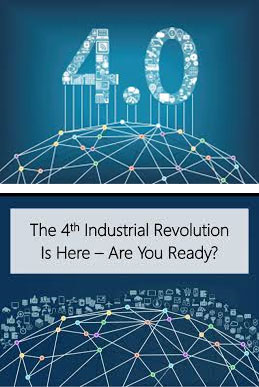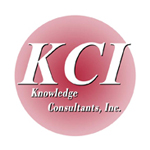Aligning with the 4th Industrial Revolution

Overview
 Anticipating Change – Prepare for Success
Anticipating Change – Prepare for Success
The 4th Industrial Revolution (4th IR) identified at the World Economic Forum has been accelerated by recent world events such as the current pandemic. Successful managers sense factors of change and anticipate the impact of those changes on their organization, customers, and economy. Anticipation of change factors is the key insight in determining organization direction and survival. Anticipation depends on predicting change and understanding forces that are causing change.
Three industrial revolutions have been identified that had profound impacts on the organizations. For the 4th IR the multi-dimensional view is focused on emerging technologies and how these technologies work together crating new industries and opportunities for existing industries to enter and keep markets. Preparing for change requires some insight into where that change comes from.
‘Chance favors the prepared mind’ (Louis Pasteur). Knowing what might happen and how likely it is gives your organization an advantage.
Converging Technologies and Opportunity
The key concern in anticipating change is how you identify and know the changes that are emerging and how they leverage each other. So, how do you sort out the technologies emerging today? The literature and media presentations speak about many types of technologies emerging today, driverless cars, artificial intelligence, machine learning, robots, biotech and on and on. There is a need to understand which of these are important to your organization and to what degree they impact organization future.
Keep Ahead of the Wave with 4th IR Knowledge
Understanding the impact and likelihood of converging technologies and the factors that put pressure on your organization keeps you one step ahead of other organizations. Managers and professionals today need a grasp of the coming changes and how they can both profit and take advantage of the changes.
Benefits of attending
Expected Learning Outcomes
- Relate 4th IR factors to the current organization
- Understand the role and use business alignment techniques for assessment
- Apply ranking algorithms to impact factors to focus organization assets
- Explain the levels of alignment for best planning results
- Integrate 4th IR plans with strategic plans
- Prepare a basic technology forecast for the organization
- Demonstrate how to identify 4th IR opportunities
Who should attend
Who should attend
Managers, business planners, strategic planning specialists, business performance analysts, and business analysts.
Course Outline
Anticipating Waves of Change
Begin with identifying what waves of change are, technology waves and then the impact these changes have on your organization. Dealing with these changes requires some new techniques of assessing change and providing a response to the change. One key technique emerging today is business alignment, aligning the external environment with strategies, tactics, and execution of the organization.
Since change can happen from outside the organization or internally with changes in execution the alignment must work both top down and bottom up.
Session 1: The Meaning of Cycles of Change
Section 1.1: Long Wave Cycles
- Long wave Kondratieff cycles
- Long wave cycles and change
- Why are these important?
- Video Discussion – Long Wave Cycles and Their Impacts
Section 1.2: Long Wave Cycles and Industry – The Technology View
- Past technology cycles and their impact
- The emerging current technology cycle
- Potential impact of this change
- Demo Analytics Example – Looking for Technology Trends
Session 2: Technology and the 4th IR
Section 2.1: Types of Technology Waves
- External technology impacts – The top down view
- Internal technology impacts – the bottom up view
- Convergent technologies and change
- Topic Discussion – Typical Indicators of change
Section 2.2: Components of the 4th Industrial Revolution (4th IR)
- Physical technologies
- Biologic technologies
- Information Technologies
- Video Discussion – The 4th Industrial Revolution and Change
Alignment in Times of Change
Understanding what might happen requires looking at the external and internal factors that drive change for your organization. Aligning the perspectives of the organization provides the means to adapt to the changes that are emerging. In the case of the 4th IR it is a focus on the technological changes that are emerging. The emergence is not instant, they have been building to a commercial value for several years.
So, they are not difficult to identify however, assessing their impact is needed to determine the response of your organization to adapt to the changes.
Session 3: Identify Drivers of Change
Section 3.1: What are the top down key technologies?
- Using PEST(Technology)LE for identification
- Integrating the factors for priority
- Ranking factors for importance and value
- Demo Discussion – Ranking the Factors
Section 3.2: Connecting the External to Strategic views
- Defining the strategic view
- Linking the external and strategic views
- Identifying key relationships
- Video Discussion – The Risks of Technology Change
Session 4: Business Alignment as a Response
Section 4.1: The Top Down View
- Defining the Strategic and Tactical views
- Linking to the views
- Assessing Impact and Hidden Relationships
- Demo Discussion – Tracing impacts
Section 4.2: The Bottom up View
- Operational perspective
- Linking the tactical and operational views
- Looking for impact relationships
- Demo – Putting it all together
Preparing for Change
Responding to the changes that impact your organization requires an adaptable plan that matches response with the changes and advances in technology. Capabilities like technology forecasts, impact assessments and understating what competitors or other organizations are doing are important in achieving expected outcomes and goals. Over time a longer horizon for planning will emerge based on how the technologies are combining to provide synergy-based opportunities or solutions.
Session 5: Preparing the Plan
Section 5.1: Plan Preparation
- Assessment – Where are you
- Readiness – can you deal with the changes
- Defining the planning horizon and scope
- Demo Discussion – A Readiness Assessment
Section 5.2: Identifying Initiatives
- Direction from management
- The technology forecast
- Defining the core initiatives
- Video Discussion – Technology Forecasts
Session 6: Executing the Plan
Section 6.1: Incremental Adaptation
- What goes into a 4th IR alignment plan?
- Integrating with Technology and Strategic Plans
- Preparing an initiative deployment plan
- Video Discussion – 4th IR and the Impact on Work
Section 6.2: Where do you Start?
- Realizing value from 4th IR initiatives
- Expected Outcomes
- Updating the plan based on technology forecast
- Final Q and A
Your trainer
Meet your expert course trainer: Frank Kowalkowski
 Frank Kowalkowski is President of Knowledge Consultants, Inc., a firm focusing on business performance, business analytics, data science, business architecture, big data, business intelligence, predictive analytics and statistical techniques. He has over 30 years of line management and consulting experience in a wide variety of industries. He has been involved with many projects both as a user and purveyor of business analytics. He has worked projects in state and federal government dealing with back office operations, legislative compliance and regulatory compliance. He has worked on the federal level with the national defense department, Coast Guard for drug interdiction and other projects. His background includes a number of industries including manufacturing, distribution, supply chain, banking, insurance, financial institutions, health care, pharmaceuticals, oil and gas and chemicals.
Frank Kowalkowski is President of Knowledge Consultants, Inc., a firm focusing on business performance, business analytics, data science, business architecture, big data, business intelligence, predictive analytics and statistical techniques. He has over 30 years of line management and consulting experience in a wide variety of industries. He has been involved with many projects both as a user and purveyor of business analytics. He has worked projects in state and federal government dealing with back office operations, legislative compliance and regulatory compliance. He has worked on the federal level with the national defense department, Coast Guard for drug interdiction and other projects. His background includes a number of industries including manufacturing, distribution, supply chain, banking, insurance, financial institutions, health care, pharmaceuticals, oil and gas and chemicals.
More recently Frank has been involved in conducting workshops, professional training sessions and assessments of architecture, data science, governance, compliance, risk and process management efforts. He also develops algorithms for analytics tools particularly semantic algorithms as well as data analysis techniques. He is often a keynote speaker, panel moderator and member at international conferences as well as a conference chair, he has written numerous papers and spoken at conferences on a variety of business subjects. He conducts frequent seminars nationally and internationally on a variety of business management, analytics and information technology topics.
He is the author of a 1996 book on Enterprise Analysis. His most recent publications are a featured chapter in the business book “Digital Transformation: Using BPM You Already Own.” for publication in 2017. His chapter is titled “Improve, Automate, Digitize”, he also has a chapter in the business architecture book titled ‘Business and Dynamic Change’ June, 2015 and a chapter on semantic process analytics in the book Passports to Success in BPM published in 2014 all are available on Amazon.
About KCI
Knowledge Consultants. Inc. (KCI)

Knowledge Consultants, Inc. is a professional services firm founded in 1984. KCI provides consulting and professional education services. With over 50 courses taught worldwide, KCI provides the opportunity to develop core strengths in the following certification areas:
- Process Management
- IT Management
- Business Performance Management
- Business Analysis
- Analytical Techniques for Business
- Business and IT Architecture
KCI has expanded its training and consulting efforts internationally into Europe, Southeast Asia and the Middle East. KCI has an outstanding list of current and past clients including many of the Fortune’s 100 companies.
Consulting focuses on the key areas of Business Performance Management, Process Management, Business and IT Architecture, Business Analysis, Using Analytic Techniques for Performance Improvement and IT Management.
Schedule and Pricing
Timings – 3 hour sessions over 4 days
- 10:00 – 13:00 UK
- 11:00 – 14:00 CET
- 14:00 – 17:00 GST
Prices
- Early Bird PricingSave USD 100
Book and pay before 11, January 2021$399.00excl VAT tax 5% - Standard Pricing$499.00excl VAT tax 5%
Download Brochure and Articles
To learn more and view the course outline fill the form below to download the brochure and related articles.

